 30
30
Work tables, whether for cutting, pressing, or other types of tasks, are an integral part of any quilter's studio. But before you run out and spend a bundle on tables, there are a few things to keep in mind.
-
Optimal cutting table height is 36" unless you are very tall or smaller in stature. This is the same height as most kitchen countertops.
-
When ironing, a table that is about 3" higher than your cutting table is optimal. Ideally the pressing surface should be a few inches below your elbow when standing.
-
You can upcycle furniture, but make certain that they work within the confines of the height that you need.
-
Think about storage under the tables. Don't waste all of that real estate by not including additional storage.
-
Think about hanging small tools (i.e. scissors, rulers, tape measure) on these work tables. This will save you time and you will be more productive.
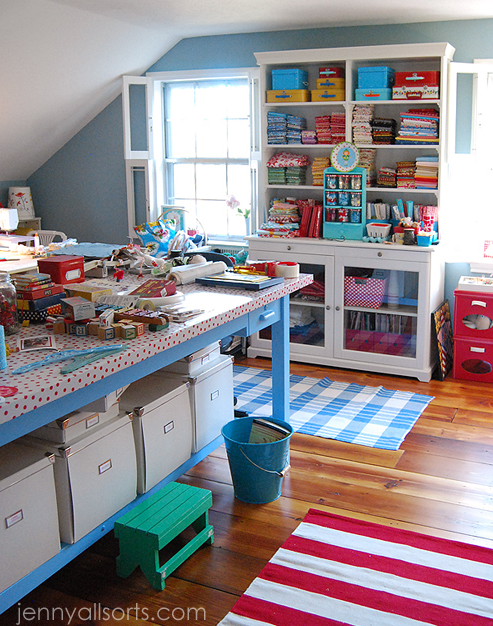
Just because it is a worktable doesn't mean that it can't be fun. This one is covered in cheery oil cloth.
Cutting Tables:
When it comes to deciding on a cutting table consider these tips from Yesterday's Thimble.
In order to cut out your fabric, you need a large, flat area. It must be big enough to spread out at least a yard of fabric, preferably two yards, and sturdy enough that it will let you pin your patterns and cut them out. What are your options?
-
Some people cut their fabric on the floor, but this is the least practical choice as it will strain your back and bruise your knees.
-
A dining table is slightly better than the floor, but it’s still not ideal unless you have a bar-height table. Most tables are too low, which means you’ll hunch forward as you work. This puts a dangerous strain on your back, neck, and shoulders, and what starts out as a minor discomfort, can turn into a problematic issue given time. There’s also the risk of scratching your dining table with pins or shears.
-
A cutting table is the best option, provided you have the space and can afford one. Look for a professional cutting table, which stands about 36″ high. Depending on your height, this should be the right level for you to work at without straining your back. The table needs to be large, too.
-
Professional cutting tables can be expensive, so keep an eye out for sales.
-
If you can’t afford a cutting table, there are other options. You could repurpose a kitchen island or counter, for example. They’re the right height and—Bonus! You can use the cabinets underneath to hide extra fabric and supplies.
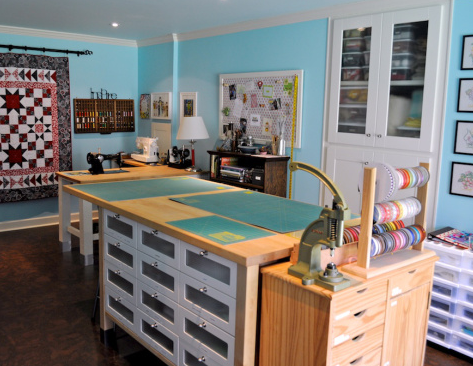
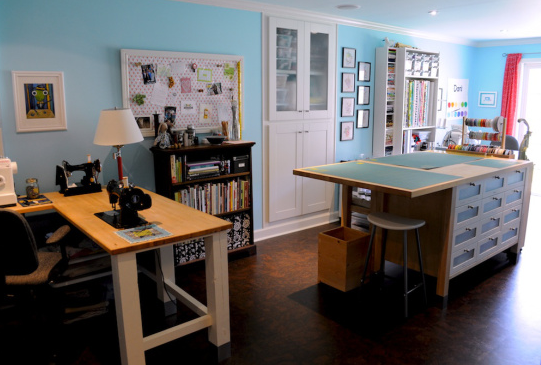
Dani Miller uses a kitchen island. MQG
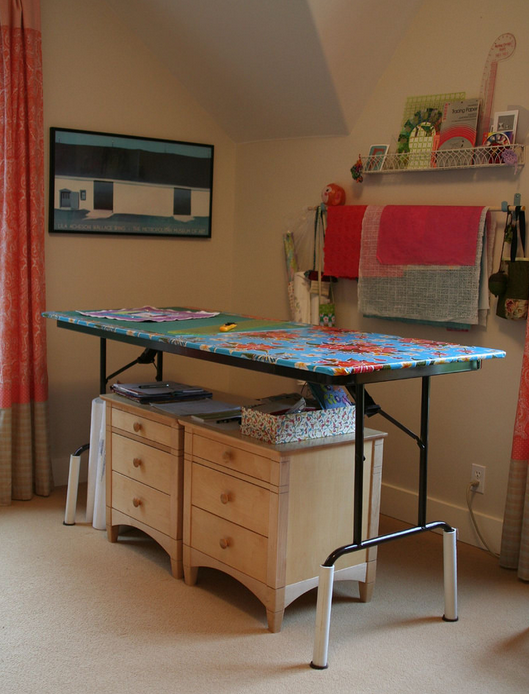
Use PVC pipe, cut to size, to elevate a folding table to the proper height for you. PinkChalk
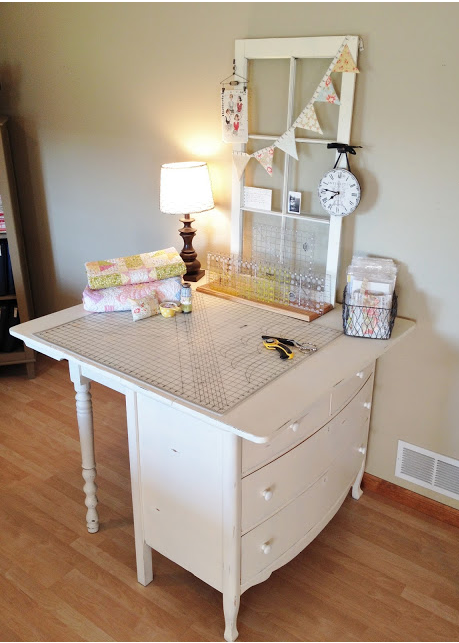
Combine a drop leaf table and chest of drawers. CarriedAway
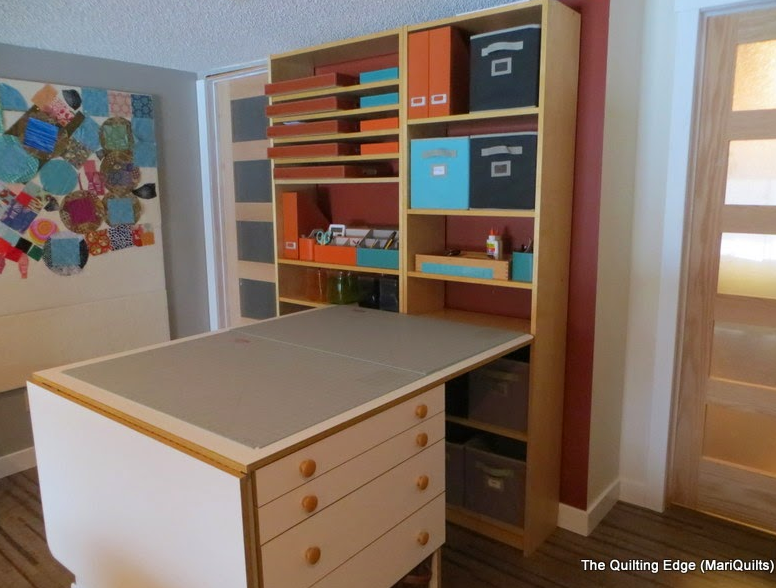
Drop leaf table with storage. Quiltingonthedge
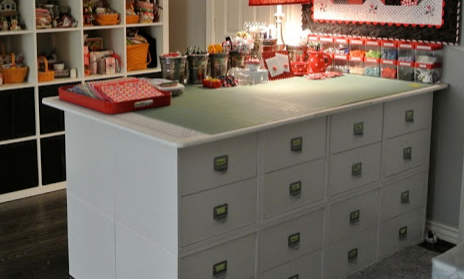
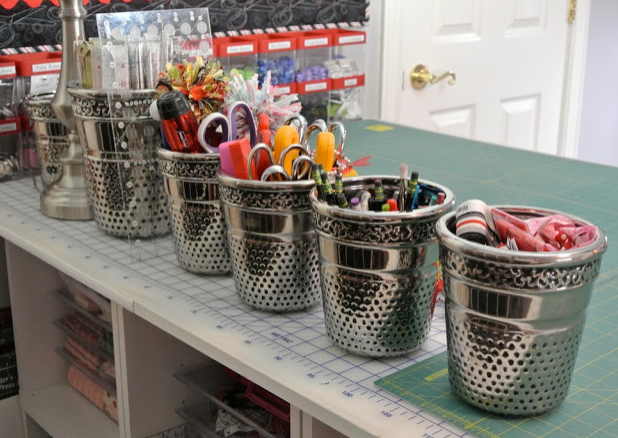
Table with open storage on one side/drawers on other. Alittlebitbiased
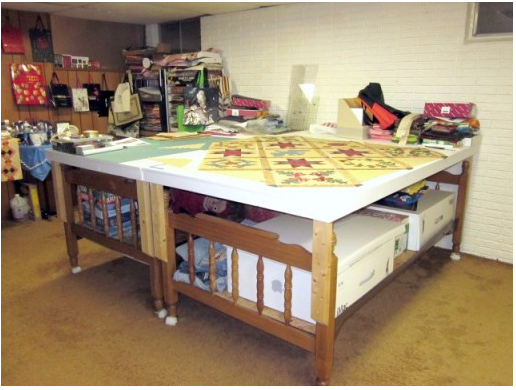
Upcycle a set of bunk beds. QuiltedJonquil
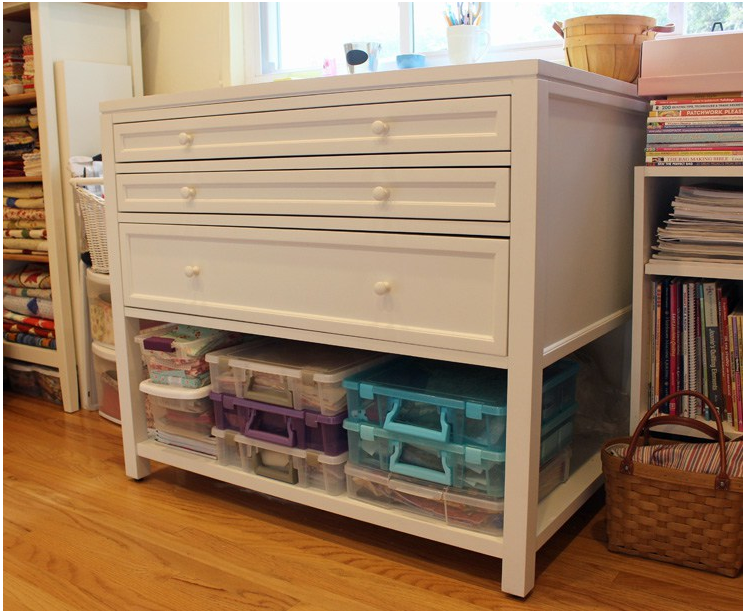
Julie Cefalu's cutting table with drawers for storage.CraftyQuilter
Pressing Tables/Boards:
Gone, for most quilters that is, are the days of having a folding ironing board taking up space in our sewing area But that doesn't mean that the vintage piece you are about to toss out can't be used around your home. Be the envy of visitors by subtly letting them know you are a sewist by incorporating an ironing board into your decor. If you are lucky enough to have a vintage wooden one...even better. Check out these clever ideas here.
Now, let's get back to the topic at hand. When it comes to a pressing, there are several things to keep in mind. The type of pressing you are doing when it comes to quilting will determine the surface needed.
Hard:
1. Setting seams locks in stitches
2. Pressing seams open, especially when large numbers (6 or more seams) come together
3. Pressing when bias edges are involved
Soft:
1. Pressing an appliqué or
2. Pressing a piece of embroidery such as redwork
Ideally you want the largest pressing surface that will fit into your sewing space comfortably. Building your own is not that difficult. Most Hardware stores can cut wood to size. Add a few other tools, and you can make your own custom-sized (why not several?) pressing board to fit your needs.
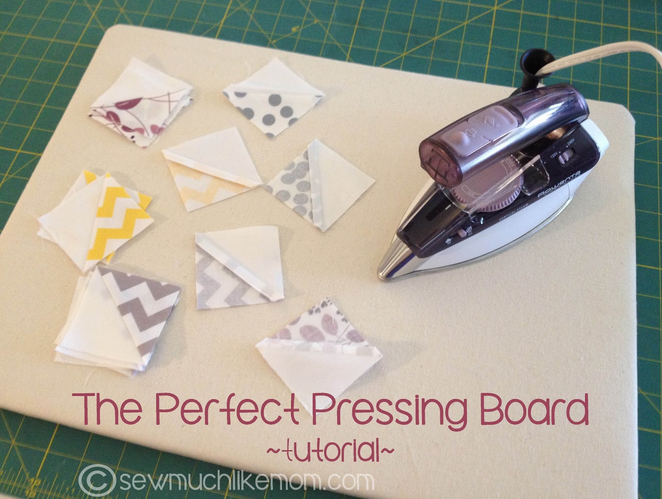
Sharon Schamber shows you how to make a customized perfect pressing surface. SewMuchLikeMom
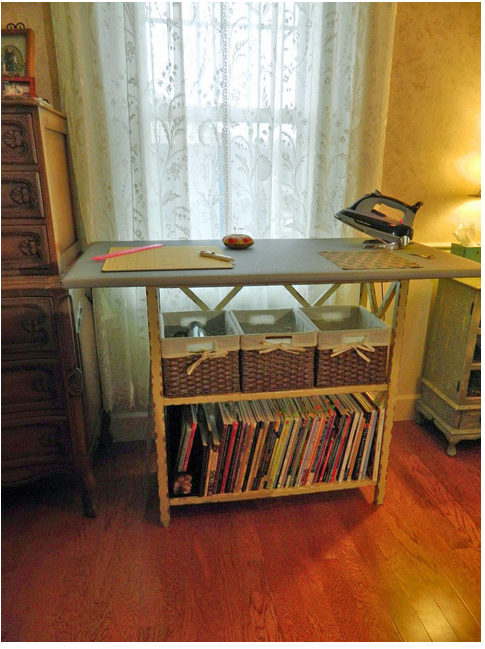
Build your own pressing/cutting station using a sturdy bookcase. BuzzinBumble
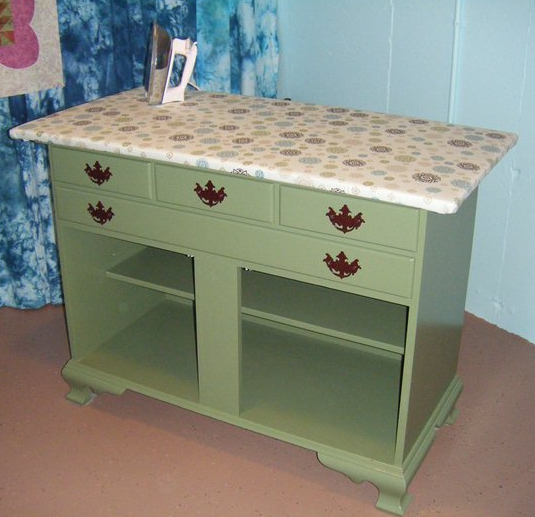
Another upcycled dresser. Removing the doors offers easy access to stored items. Jmquilts
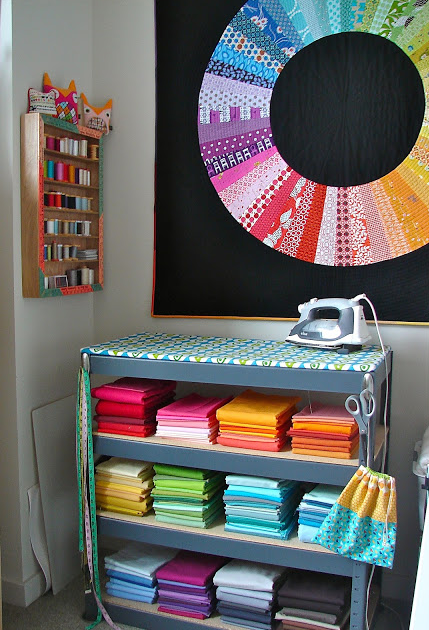
Pressing station on industrial shelving with room for neatly folded fabrics. Tallgrassprairie
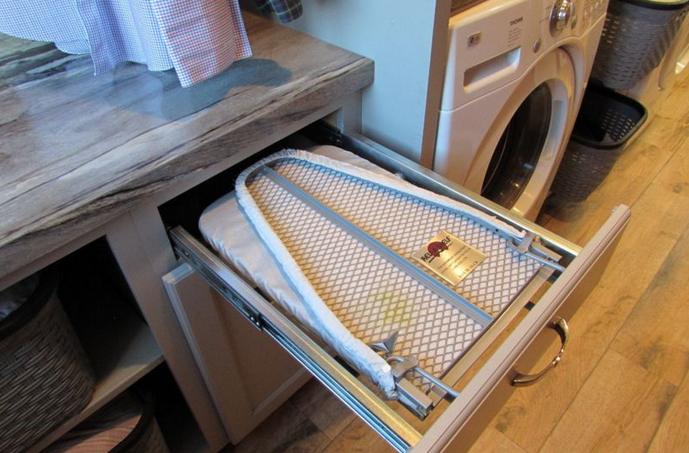
Don't have a lot of space? Consider adding a pull-out ironing surface. ChoiceWD
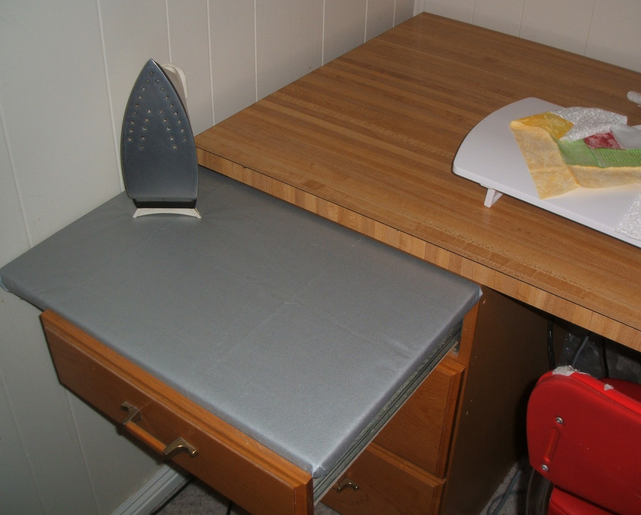
How about a pressing station that fits on a drawer? Mamajamma

A TV tray ironing table is great for pressing small items and workshops or retreats. Cleverlittlemouse
Just joined our year of organizing? Click here for other TQS Organization blogs.


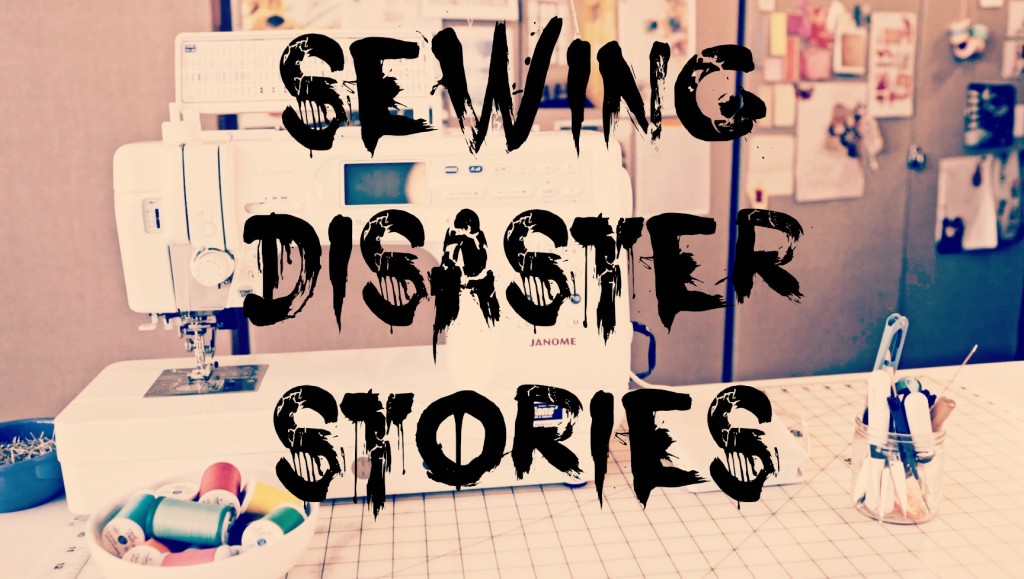
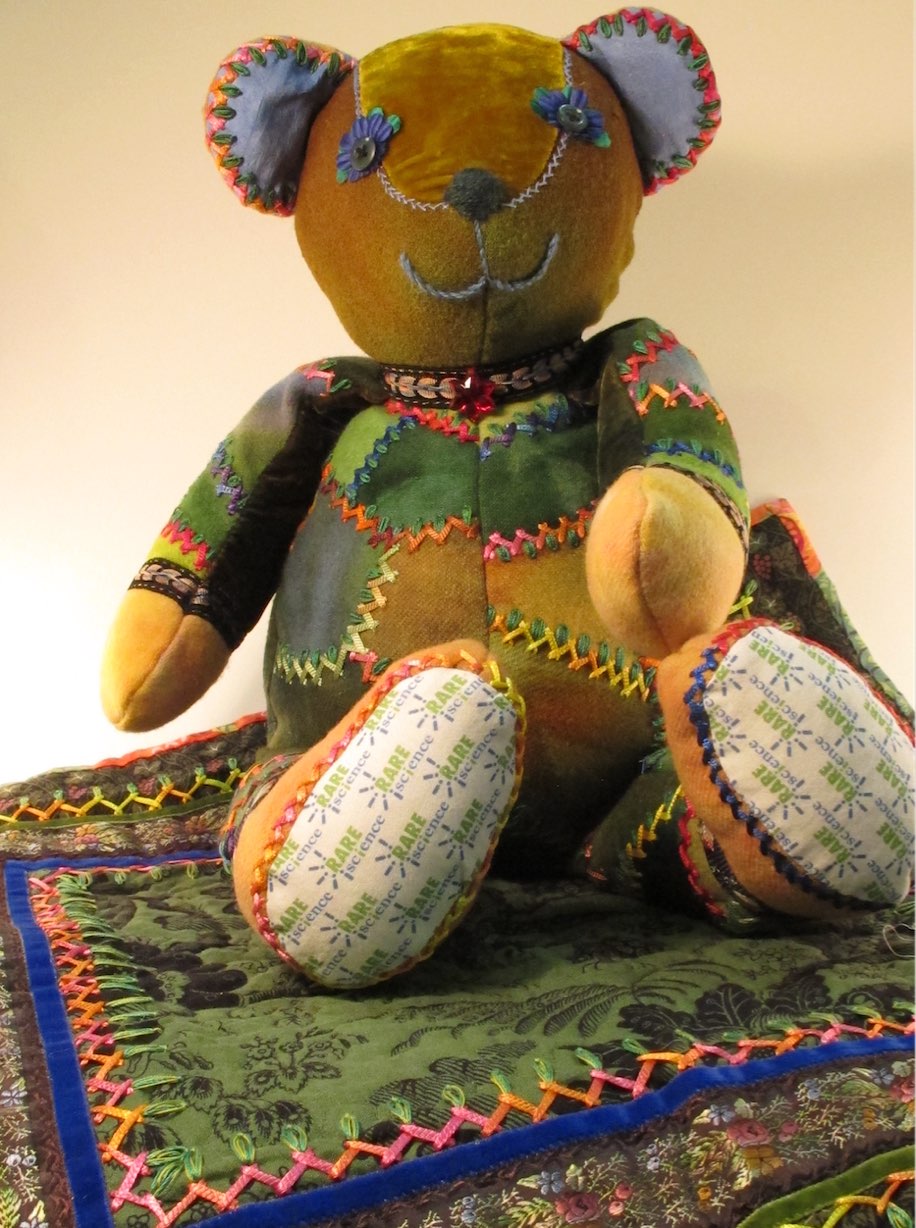
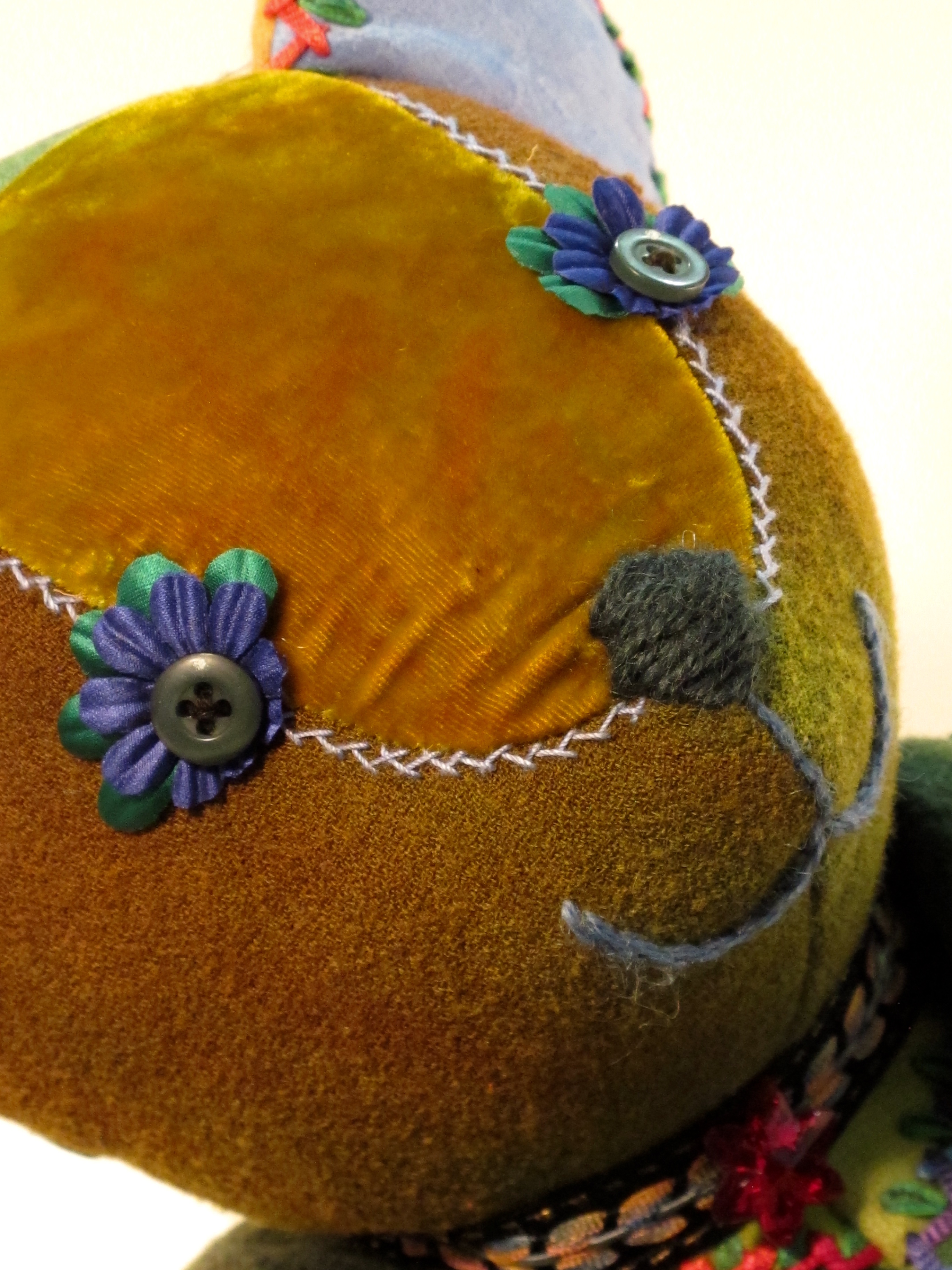







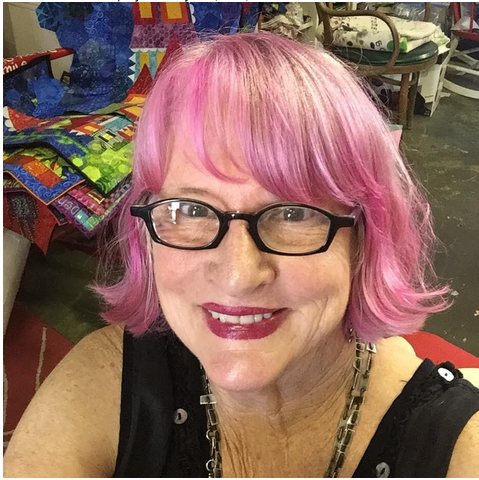

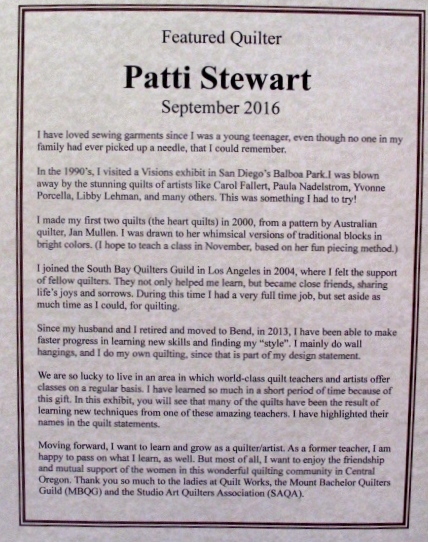



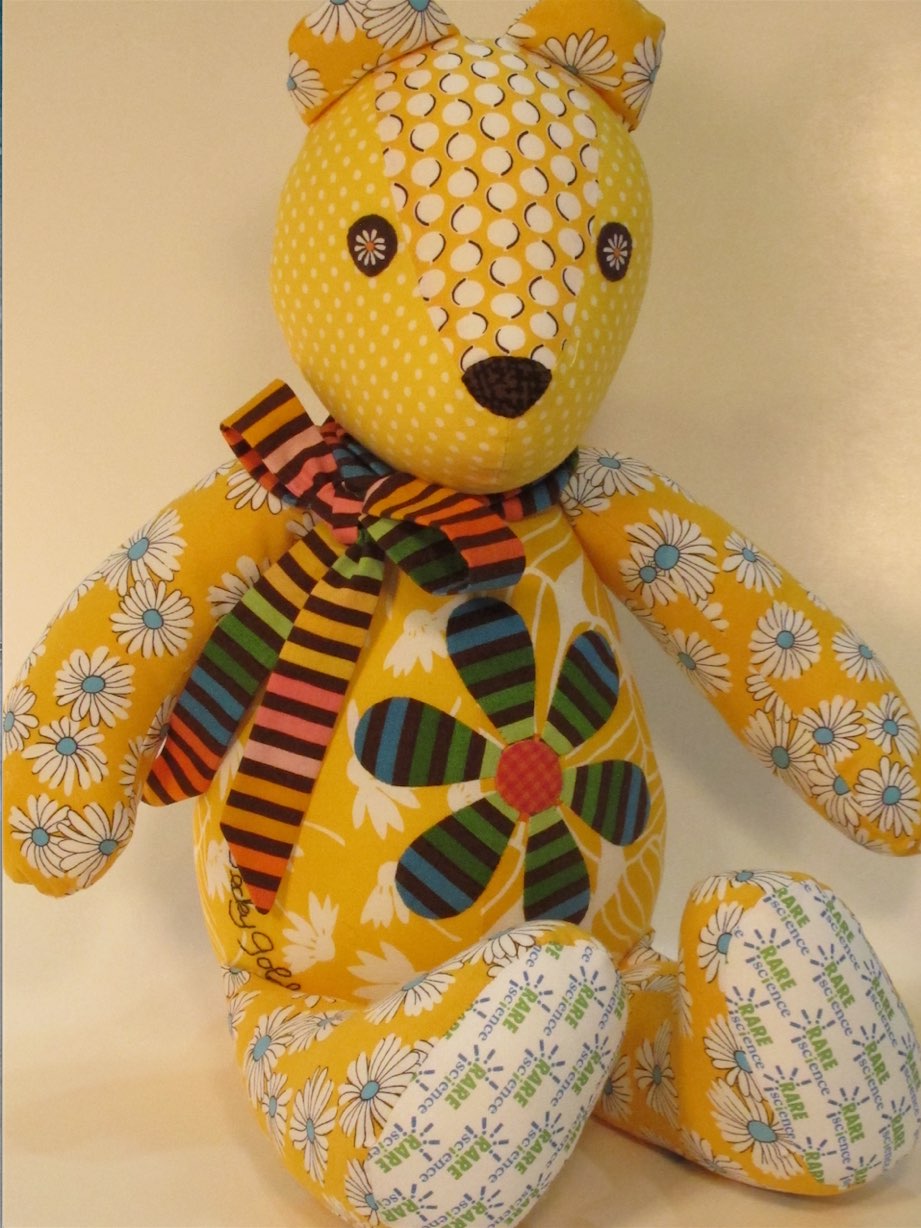
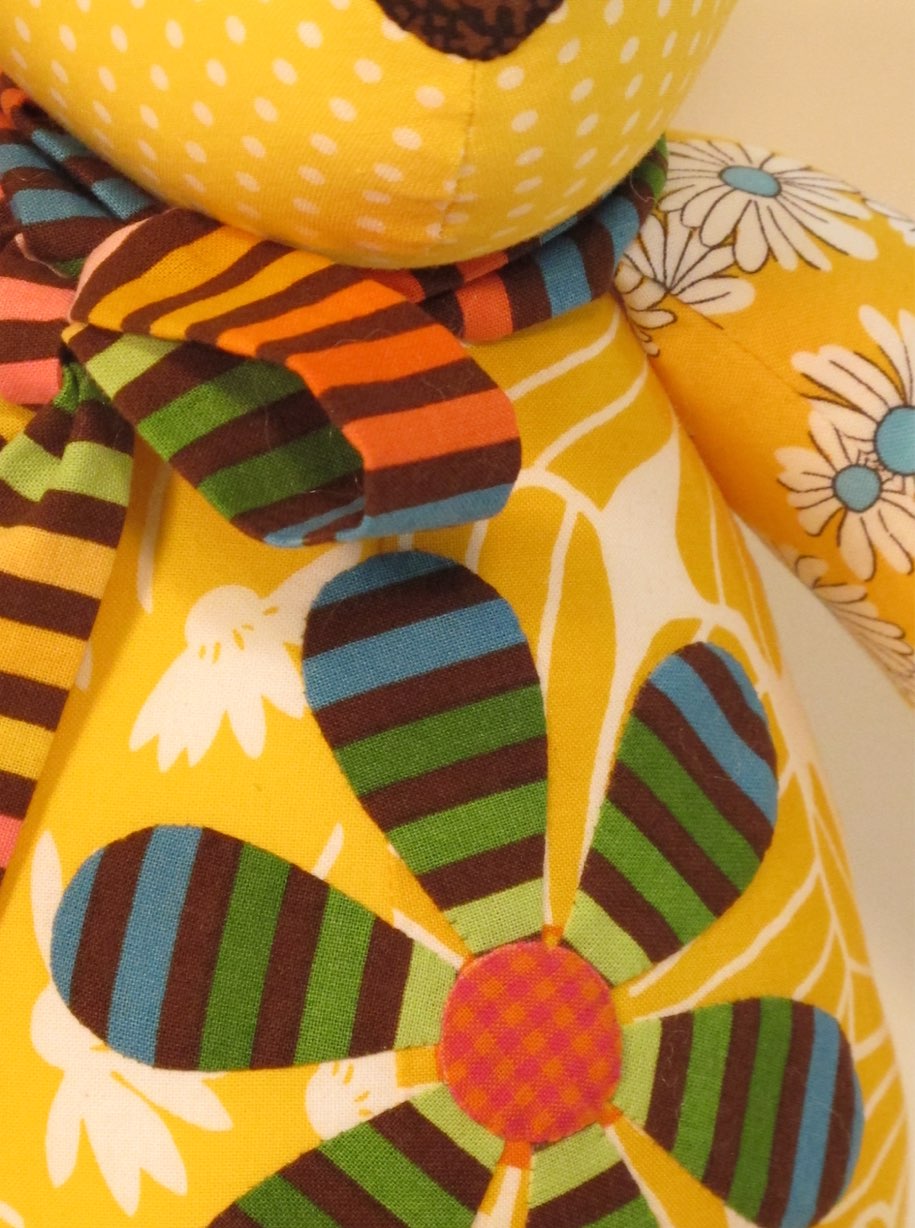
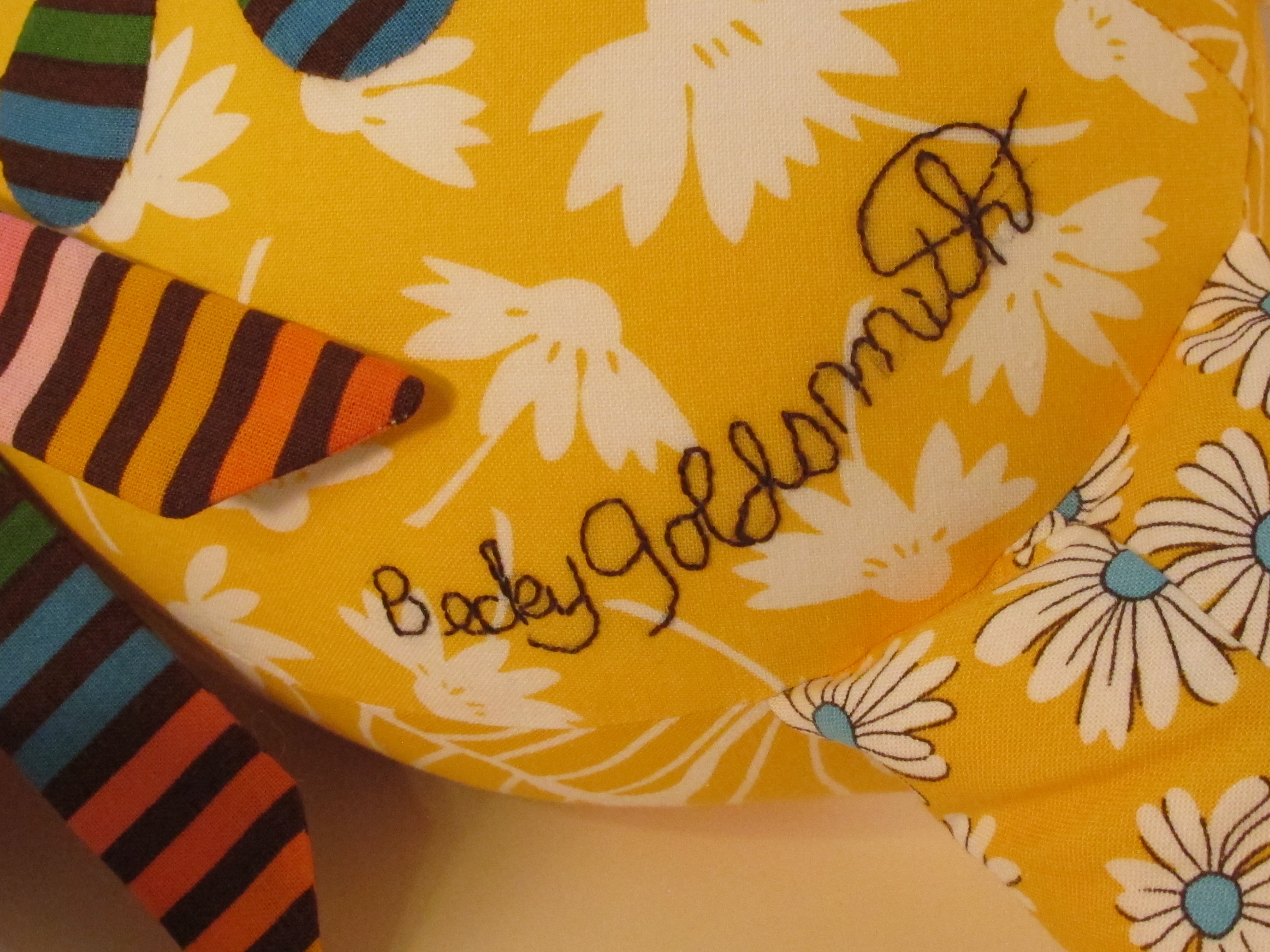





















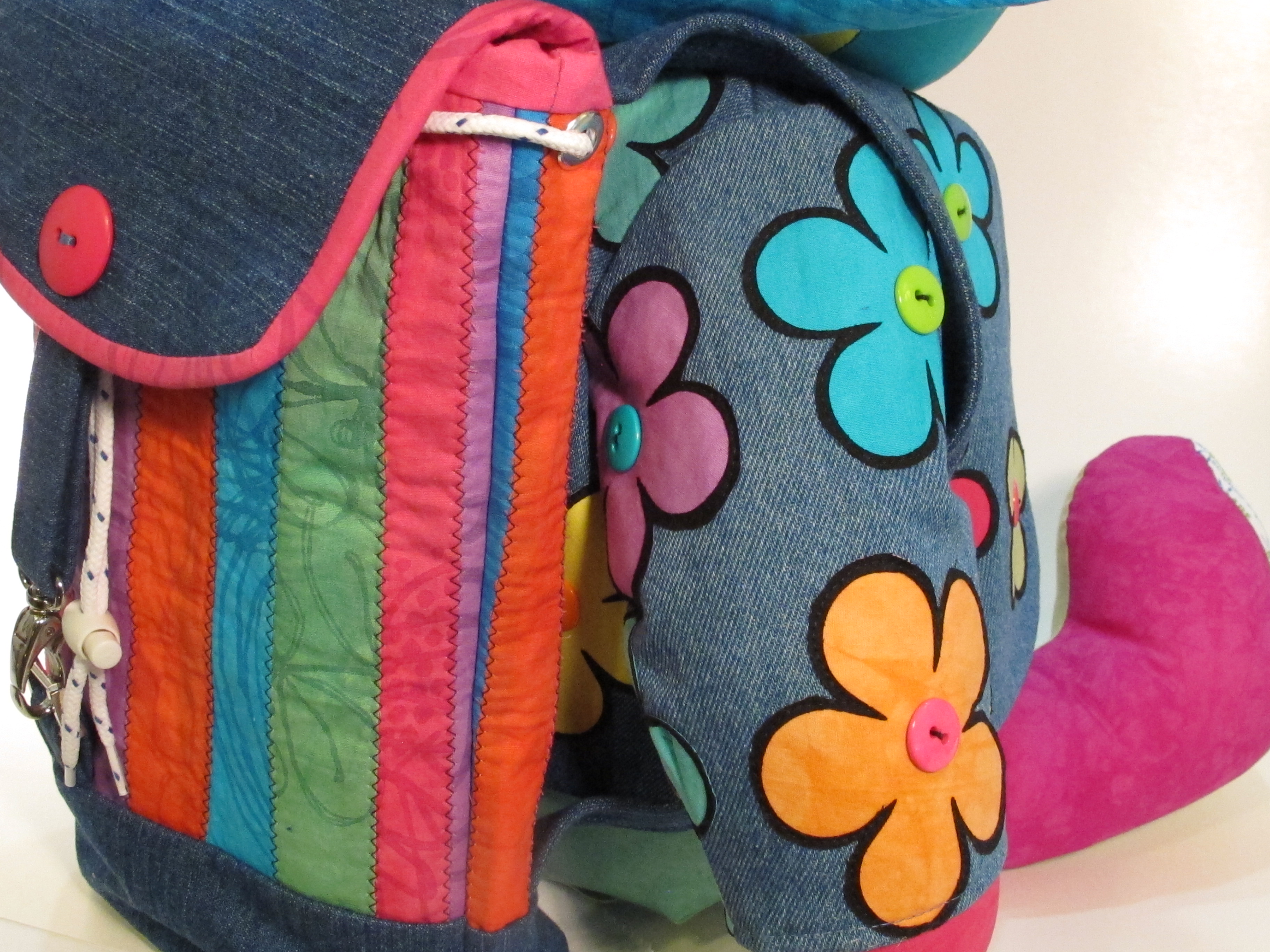
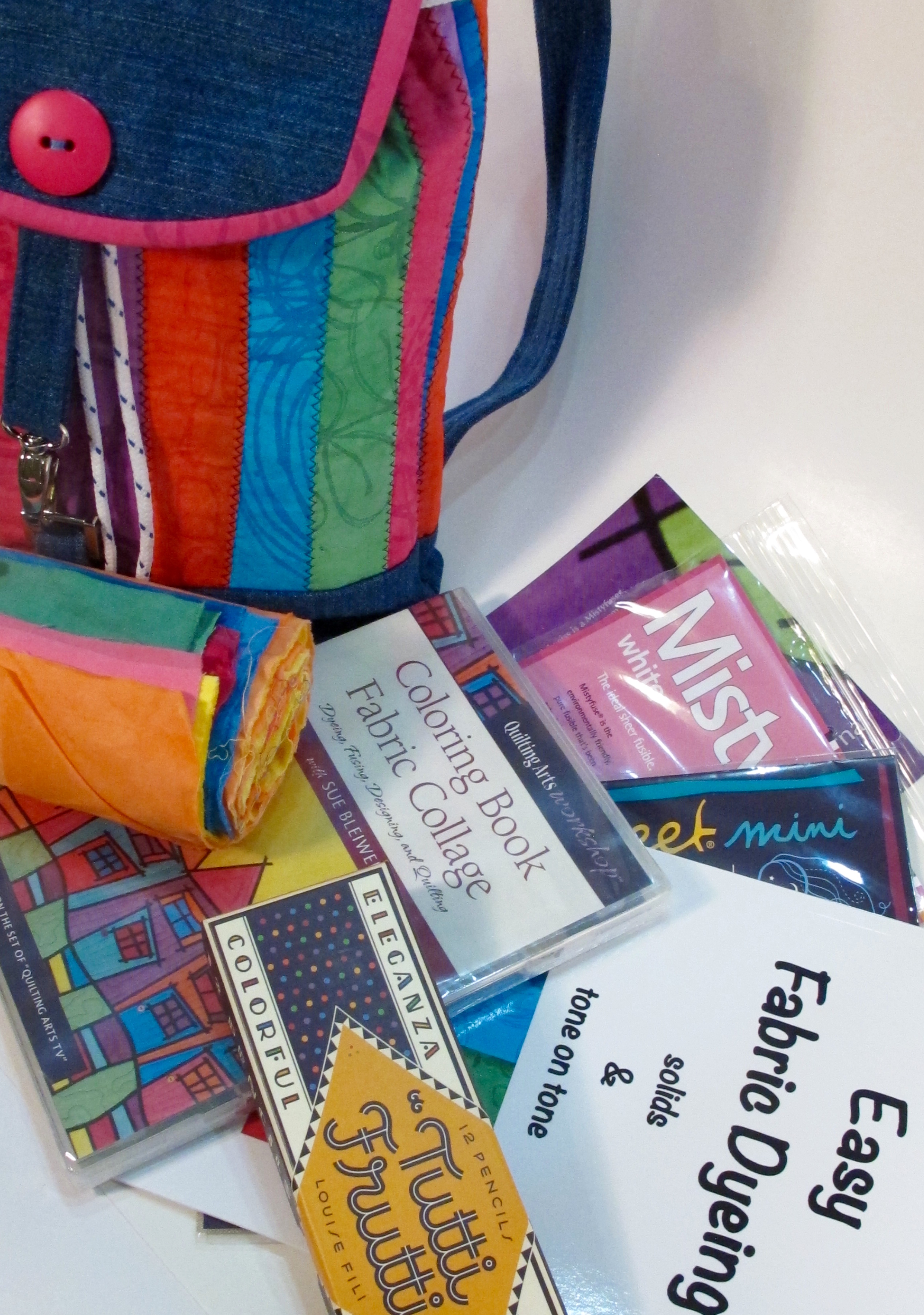
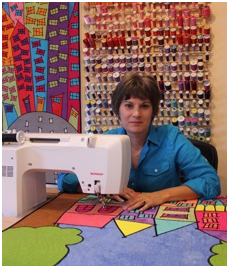


.jpg)


